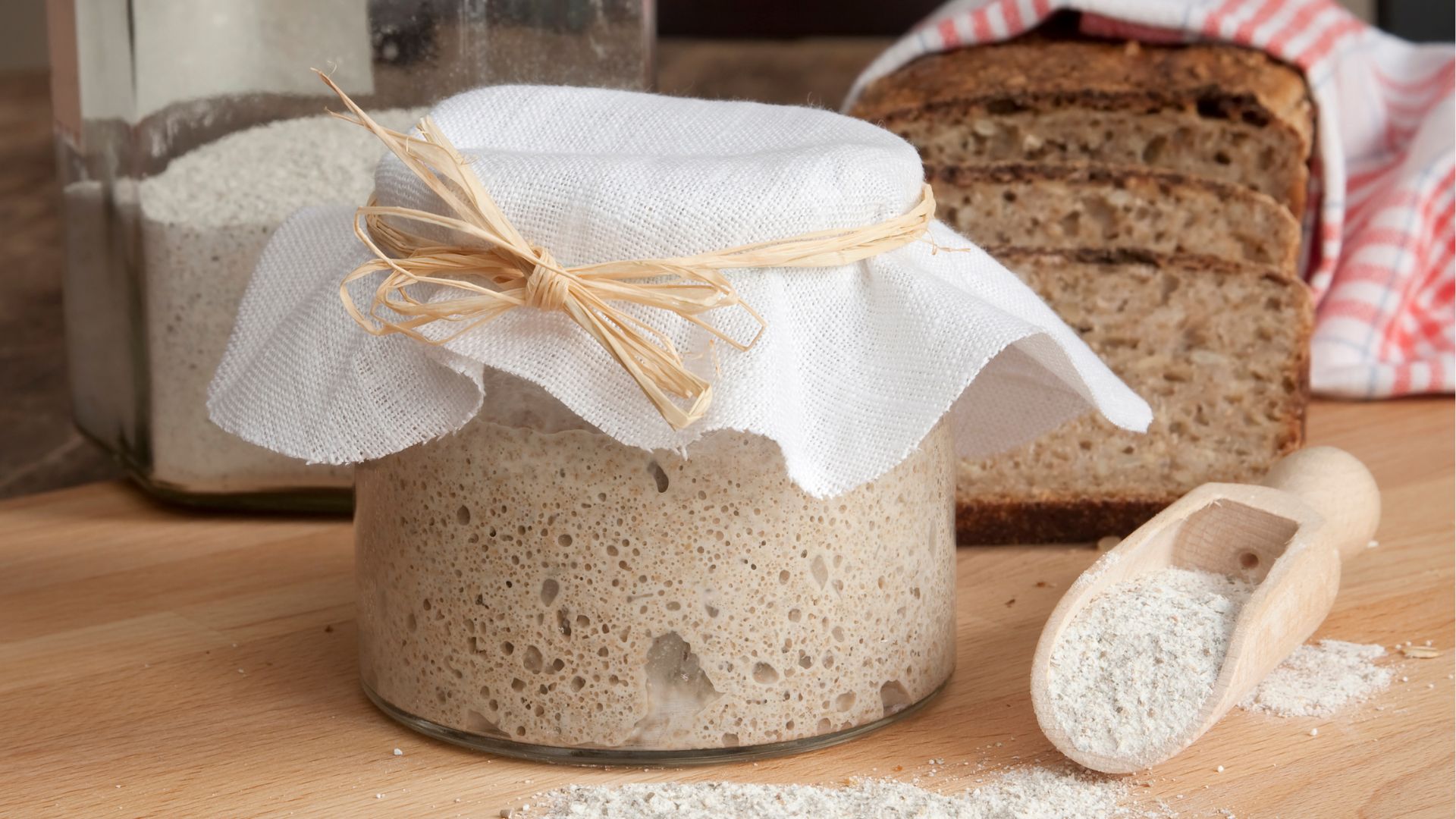Sourdough bread has been around for thousands of years—literally. The earliest records of sourdough date back to ancient Egypt, over 4,500 years ago, when an accidental fermentation (probably someone leaving dough out a little too long in that desert heat) gave rise to the world’s first leavened bread. The technique has endured, passed down through generations, from Roman bakers to medieval European peasants, and now to hipster bakers and home enthusiasts. In our modern world of instant everything, sourdough stands as a delicious reminder that some things are just better when you take your time.
Here’s why this old-school bread is worth its weight in golden, crusty loaves.
1. It’s a Gut-Friendly Carb—No, Really!
Despite what low-carb trends might have you believe, not all bread is the enemy, and sourdough is the perfect example. What sets it apart is the natural fermentation process. Instead of the quick rise of industrial yeast, sourdough is all about that slow, wild fermentation. This allows beneficial bacteria, particularly lactic acid bacteria, to thrive. These bacteria are the same ones found in foods like yogurt and kimchi—great for your gut!
Think of sourdough as the cool, fermented cousin of your everyday bread—one that brings some probiotic friends to the party and helps keep your digestive system happy. This fermentation magic makes sourdough easier on the stomach, and many folks with mild digestive issues find it much more tolerable than the usual store-bought white stuff.
Pro tip: If your bread gives you grief, try switching to sourdough. Your gut may throw you a thank-you party.
2. More Bang for Your Bite: Enhanced Nutrient Absorption
Sourdough’s slow fermentation doesn’t just add flavor—it also unlocks more nutrients from the wheat. The villain here is phytic acid, a compound found in grains that likes to bind to minerals like iron, calcium, and magnesium, making them harder for our bodies to absorb. In the world of sourdough, however, phytic acid is broken down during fermentation, allowing you to soak up more of the good stuff.
It’s like sourdough hands you the key to the bread’s nutrient vault, whereas regular bread just shrugs and says, “Sorry, I left the door locked.”
3. Stable Energy: No Rollercoaster Blood Sugar Rides
You know the drill: you eat something sugary or overly processed, feel great for 30 minutes, and then crash like a toddler after too much birthday cake. Sourdough helps avoid this blood sugar rollercoaster because it has a lower glycemic index than most other breads. The fermentation process slows down carbohydrate absorption, leading to a steadier, slower rise in blood sugar levels.
In other words, sourdough won’t leave you hunting for snacks an hour after breakfast or reaching for a nap after lunch. It’s the bread that keeps things mellow.
Fun fact: The acids produced during fermentation help tame the bread’s starches, turning them into slow-burn fuel rather than a fast-fire sugar rush.
4. Antioxidants: Bread That Fights Back
Sourdough isn’t just tasty; it’s also got a bit of a health hero complex. Thanks to fermentation, sourdough bread contains a higher level of antioxidants compared to typical wheat bread. These antioxidants—compounds that help protect your cells from damage and support overall health—are naturally boosted by the fermentation process.
No, sourdough won’t replace your kale smoothie, but it’s nice to know that every crunchy bite is pulling a little extra weight for your well-being.
5. Easier on the Gluten-Sensitive: A Gentler Approach to Wheat
Let’s get one thing straight: sourdough isn’t gluten-free, but it’s definitely gluten-lite. The long fermentation partially breaks down gluten, making it more digestible for those with mild gluten sensitivities. The enzymes produced during fermentation work to pre-digest some of those pesky proteins, so your stomach has less work to do.
For many people who find regular bread a bit heavy on the system, sourdough is a welcome compromise—a slice of gluten heaven without all the drama. But if you’ve got celiac disease, proceed with caution (or just avoid altogether).
Cheat sheet: Think of sourdough as the friend who smooths out the awkward bits at a dinner party—it’s still bread, but it’s a bit more considerate of your digestive needs.
6. Flavor Explosion: Complexity in Every Bite
Let’s not forget the most obvious reason people go gaga for sourdough—the flavor. Sourdough is a far cry from the bland, fluffy loaves that line supermarket shelves. Its rich, tangy taste comes from the wild yeast and bacteria that work their magic over hours, sometimes days, of slow fermentation. Each loaf is a little different, with subtle variations in flavor depending on the flour, environment, and even the baker’s mood that day.
Not only does sourdough taste better, but its firm, chewy texture also makes it infinitely more satisfying. This is bread that requires a bit of chewing, making each bite a celebration of the senses. Plus, that crunchy crust? It’s basically a hug from the universe.
Pro baker tip: Sourdough’s flavor complexity can turn even the simplest sandwich into a gourmet experience. Try it with a smear of good butter, a sprinkle of sea salt, and thank me later.
7. Keeping Tradition Alive: A Bread with a Story
At a time when mass-produced food dominates the shelves, sourdough’s revival is a nod to tradition. It’s a connection to our food history, a slice of edible nostalgia that celebrates patience, craft, and time-honored techniques. Whether you’re buying it from a local bakery or making your own starter at home, sourdough invites you to slow down, appreciate the process, and taste the difference that real craftsmanship makes.
From ancient Egypt to your modern kitchen, sourdough has stood the test of time for a reason. It’s a reminder that not everything needs to be instant, and sometimes, the best things in life come to those who wait—especially if you’re waiting for a fresh loaf to come out of the oven.
Conclusion: Sourdough—The Old-Fashioned Bread with Modern Benefits
Sourdough is more than just a tasty bread with a cult following; it’s a nutritional powerhouse that brings together ancient baking techniques with modern understandings of health. Its fermentation process creates a bread that’s easier to digest, kinder to your blood sugar, and packed with nutrients that would otherwise stay locked away. Plus, it’s got a flavor that simply can’t be matched by any conventional loaf.
So, the next time you’re tempted by a pale, lifeless slice of bread, remember that sourdough is there for you—bringing not only flavor but a side of history and a handful of health benefits, one bite at a time.





